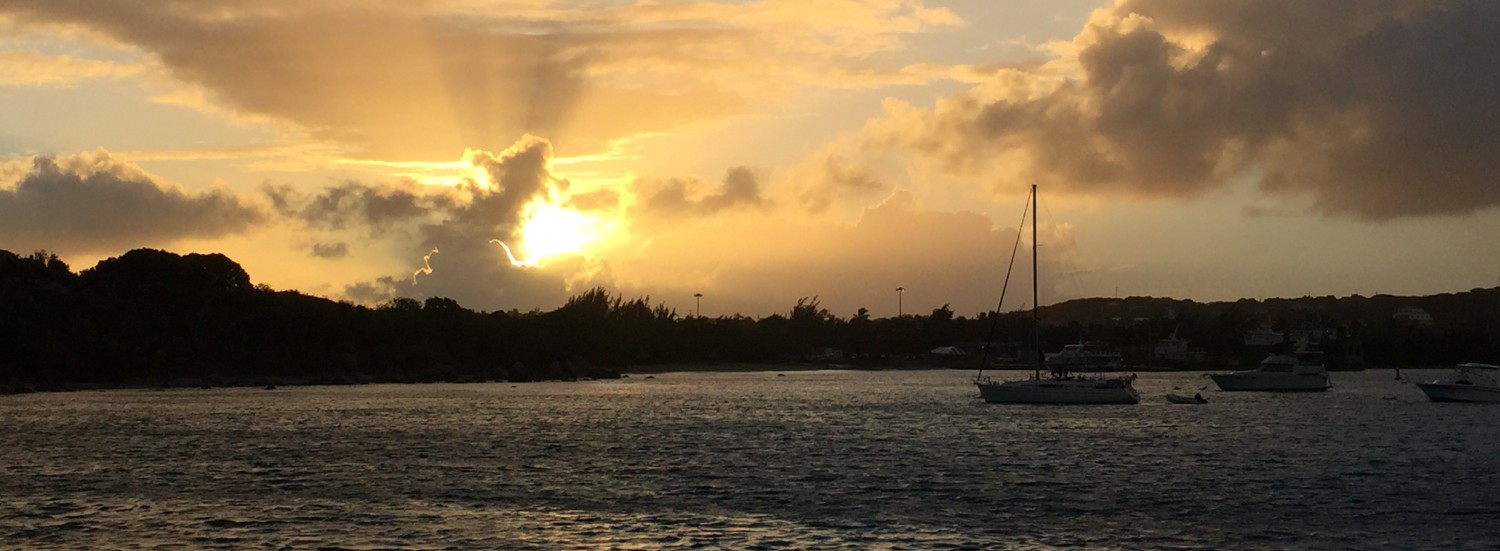 This is the last post of our little financial journey through the ownership of our 2015 Leopard 44, LOW FLITE. In previous posts we looked at how to pay for the boat; the purchase price with admin costs; our plan & budget vs reality for boat yard work; purchases beyond boat yard work; and provisioning cost. Here we look at the proceeds from selling our boat vs where we thought we might be financially at this point before we bought.
This is the last post of our little financial journey through the ownership of our 2015 Leopard 44, LOW FLITE. In previous posts we looked at how to pay for the boat; the purchase price with admin costs; our plan & budget vs reality for boat yard work; purchases beyond boat yard work; and provisioning cost. Here we look at the proceeds from selling our boat vs where we thought we might be financially at this point before we bought.
Some people will tell themselves (and others) that resale value is something that they deliberately consider before choosing a brand to purchase, when in reality, buying something like a boat or a car tends to be more an emotional that logical choice, and so it was with us.
In our case, we had decided after chartering twice in the Mediterranean on monohulls, and twice in Caribbean on catamarans that we definitely wanted a catamaran. The fact that their demand continues to grow and would therefore provide a decent resale value was more a bonus for us, but never really a deciding factor.
Once we had made that decision primarily for other reasons, Christa set to work to try and figure out how such a decision would impact our finances at the end of our so-called 5 year plan, or 1 year plan renewed five times, or…whatever we came up with during the conversation to sound clever.
There were a few reasons why we decided to sell after getting all the lightning damaged fixed. One reason was that we found ourselves in an unusual situation that the boat was worth more than when we bought it. We knew it was unlikely we would get what the various brokers talking to us thought we should ask for it, but the numbers being thrown around were much more than we realized they could be. At the time we were more concerned about hurricane season and then our lightning damage, and we weren’t following the market at all.
So we sell the boat. It went for much more than we paid for it, but what about how much we put into it after we bought it? I was confident we were still coming out ahead, while Christa thought it would be close. Since selling the boat in September, we have been telling everyone that we have come out ahead, we can take our time and wait for the (next) right boat to come along while we do some diving, travel, etc. Now that we have looked at the actual numbers, were we both surprised that we actually lost a little in the end. How on earth did that happen?
To give some context surrounding our decision making just prior to the sale, below we detail a number of categories we used, and any associated charts, from our planning before we bought the boat. This was all towards our forecast 1-5 years out, and where we saw ourselves at various financial gates or decision points along the way. We used a typical list of expenses for boat ownership, and the ones we’ll cover here are: depreciation; financing; and maintenance.
Depreciation
We weren’t buying new, and we were looking for something in the 1-3 year old range, so based on our research we decided that our boat would depreciate at an average of 7% per year for the five years we thought we would own it. You could likely call this alchemy-pseudoscience as we looked at market research, talked to brokers, read books/magazines/blogs etc. so we thought we’d be in that range, but understood we couldn’t predict the future. For our boat, that depreciation looked like this:
| Boat Value | 465,000 | Annual Deprec | Depr/mo |
| Year 1 | 432,450 | 32,550 | 2,713 |
| Year 2 | 402,179 | 30,272 | 2,523 |
| Year 3 | 374,026 | 28,152 | 2,346 |
| Year 4 | 347,844 | 26,182 | 2,182 |
| Year 5 | 323,495 | 24,349 | 2,029 |
| Year 6 | 300,850 | 22,645 | 1,887 |
| Year 1-5 depreciation: | 141,505 | 2,358 | |
We were looking at losing an average of about $28,000 per year, or $2,400 per month over a five year span just for depreciation. That seemed like a lot. Was it? Well, before we could decide, there was more to look at since we wanted to mortgage some of the cost based on what we thought was our cunning planning to pay for the boat.
Financing
| Finance Costs: 400K | Principal | Princ + Int | Payment | Balance | Int Costs | Int Cost/Mo |
| Year 1 @3.29% | 400,000 | 413,160 | 27,600 | 385,560 | 13,160 | 1,096.67 |
| Year 2 | 385,560 | 398,245 | 27,600 | 370,645 | 12,685 | 1,057.08 |
| Year 3 @ 4.25% | 370,645 | 386,397 | 27,600 | 358,797 | 15,752 | 1,312.70 |
| Year 4 | 358,797 | 374,046 | 27,600 | 346,446 | 15,249 | 1,270.74 |
| Year 5 | 346,446 | 361,170 | 27,600 | 333,570 | 14,724 | 1,227.00 |
| Total | 138,000 | 333,570 | 71,570 | Avg = $1193/mo |
The bank would give us essentially as much as we wanted at 3.29%, but wouldn’t budge on the interest rate if we increased or decreased the principle. We decided on a 2-year term which would force us to reach a decision point based on whatever the banks were doing at that time. We used an arbitrarily high number of 4.25% for the probability we would continue along the same path. Note that it is a complete coincidence that our planned annual depreciation of about $28,000 almost matches our annual payment servicing the loan of about $28,000.
We now had an additional expense to consider which was the average annual interest on the loan of about $14,000 or $1193 per month. Now we’re up to around $42,000 a year on average that our 5 year plan, with this boat, would cost us. That annual number is now starting to get our attention, but not scaring us away. How about planned maintenance costs?
Maintenance
Again, based on our pseudoscience, we planned on an approximate 5% annual cost that we need to put away, or plan to spend unless something unusual happened costing us more. In our case about $25,000. Checking various sources, they advocated that a range of around 5% boat value socked away for maintenance cost was the way to go. In reality there are many things that will affect your cost. How big and/or complex is your boat? How old is it? What is the cost of parts and labour where you’ll be? How much can you do yourself? How well had it been maintained by previous owners? Plus, this rule of thumb 5% doesn’t really seems to work for newer, large cruising sailboats, whether monohull or catamaran. For example, what on earth were we going to need to spend $25,000 on each year?
Using our 5% figure we would likely have enough money to replace our sails/sheets/halyards, and one of the diesel engines each year, and still have money left over. If we change the rule from 5% annually for maintenance to include all operating expenses, it starts to make a bit more sense. Cost of fuel up to $1,000, insurance at up to $10,000, marina fees, etc. along with maintenance may start to bring you closer to that number. It’s always a good idea to over-estimate expenses, but not enough to make things prohibitive.
Other than insurance, we really didn’t have many other operating expenses. We planned to spend no time in marinas, never used a mooring ball, very little use of our generator, and the engines were very fuel efficient. For example, between October and March, we spent $69 for dinghy gasoline and $647.02 on diesel for the big boat. We have room for about 190 gallons and only ended up filling twice. Once at Harbour Towne before we headed up to Lake Worth, and once at Emerald Bay in The Bahamas.
I was confident I could handle most routine maintenance and repair, and a lot of help was only a phone call away. Since we were on a cat with numerous multiples of systems, this was both a plus and a minus. Yes, we had more maintenance and potential costs, but we also had numerous redundant systems that we could use until we got back to Florida.
Since actual maintenance costs during our stay on the boat were very low, you could argue we did really over estimate which is not necessarily a bad thing. We got the annual service done on the engines and generator as part of the lightning damage work for $350, but we would have done that ourselves at the cost of only the oil, possibly anti-freeze and impellers. We did get the hull done in preparation for selling, but could have waited another year if we kept the boat ourselves. This cost us about $3000, but set us up better for how the boat would present itself to any prospective buyers. So after one year, including some small incremental items, we would have spent just a little over $4000 of our planned $25,000 which is good, but remember this could ramp up substantially in years 2-5, or something unexpected could happen. We’ll likely still use the 5% estimate in the future.
Selling Price
OK, so that was a lot of information under the guise of “context.” If you’re still here, we’ll now deal with the key figure in all of this, the actual sale price of the boat compared to what we have spent. As we mentioned earlier, we did not realize how much our boat was worth until some numbers were thrown around while we waited for boat repairs from our lightning damage. As discussed in the previous post, we had actually spent about $537,000, but in our heads the number was closer to $500,000. So when we sat down with one particular broker, who suggested we could list out boat for $589,000, that got our attention. It was at this point that we seriously started to consider selling.
After talking to a number of other people, and doing our own research, we decided that we could realistically list the boat for $569,000. We did consider not using a broker, which is becoming more popular similar to the housing market, but since we would not be co-located with the boat we decided this would be too much of a pain. In the majority of cases, when you use a broker you pay 8-10% commission. 8% if both the listing and purchasing broker are from the same company, and 10% if the listing agent has to share the commission with an outside purchasing agent. That’s a fair chunk of cash. We told ourselves that we would wait about a month before we should get concerned if the boat was not selling. We ended up getting 3 offers, and accepted the last one before the boat was even publicly listed for sale.
Looking back, we might have accepted an offer too soon, and may have sold for more money if we waited for our rough target of one month. We’ll obviously never know. In the end, the difference of possibly a few thousand dollars more was not going to compete with the relief we had of closing on the sale of a boat sitting in Florida during hurricane season.
Following the buyer’s survey and sea-trial, we gave him an additional $6,000 off the agreed sale price, so we were now going to gross $539,000 on the sale of the boat. Giving the buyer some extra consideration is normal, and in our case we did so to alleviate any fears the buyer may have and facilitate the transaction. From the sale we owed the brokerage 8%, or about $43,000. With closing costs, it left us approximately $494,00 when all was said and done. This is where we got a bit of a surprise. When we compared this to the $537,000 plus financing costs and amounts we spent to get the boat ready for sale, we ended up with an overall loss of $54,000. Wait…what? How did that happen?

That was essentially my response when Christa explained it to me. Money wasn’t the only reason we chose to sell, but it was obviously a major consideration (we’ll try and post a more comprehensive thought on this later). Even though Christa’s spidey-senses were telling her we weren’t going to make money on the sale, we were close enough for her to be comfortable with the decision. When I was doing multiple cocktail napkin calculations, I was confident we would come out a few thousand ahead. At the time, I was forgetting some fairly important items, and not anticipating others.
We listed the boat for $569,000 and ended up with $539,000 in the end. That’s a difference of about 5%, and while not unusual, I didn’t anticipate a couple noticeable drops in price with my bar math. We agreed to an offer of $545,000 even before the boat was listed for sale, so we could have lost some money there. We were willing to do so since we knew there was nothing wrong with the boat, so didn’t anticipate giving very much, if any, consideration to the buyer after the survey/sea-trial BUT we did give him $6,000 for reasons we won’t go into here. So there’s a few more bucks that I didn’t anticipate.
Also, I wasn’t thinking about the cost of financing the boat. As we previously wrote about, we set up the loan to be paid for by our dividends so we could just forget about it, so that’s what I did, but that cost us about $13,000. I didn’t include our cost for insurance either, which was just under $5,000. I may have just been considering these as sunk costs (see what I did there), we would not have incurred them if had not bought the boat, so my bar napkin math should have included them. While I did have a good grip on how much we spent at the boat yard, I did not have a good sense of how much we spent on other items, which we covered here. I think I had also completely ignored the additional admin costs surrounding the purchase, which was another substantial chunk.
So here we are, thinking about our next boat, after our little financial exercise from the past year. We lost about $54,000 after selling our boat, when we have been telling people we actually came out a little ahead. Shame on us. If we had gone through this same exercise before our decision to sell, I believe we would still have made the same decision. Christa agrees.
The downside of course is that we find ourselves without a boat, sitting in an apartment in S. Florida, instead of anchored off some isolated tropical island with a sundowner. The upside is that we got to bank the overall experience, which we enjoyed enough for us to be deliberately considering our next boat.

Now we just need some of those 1-2 year Leopard 45 owners to want bigger boats…

Leave a Comment